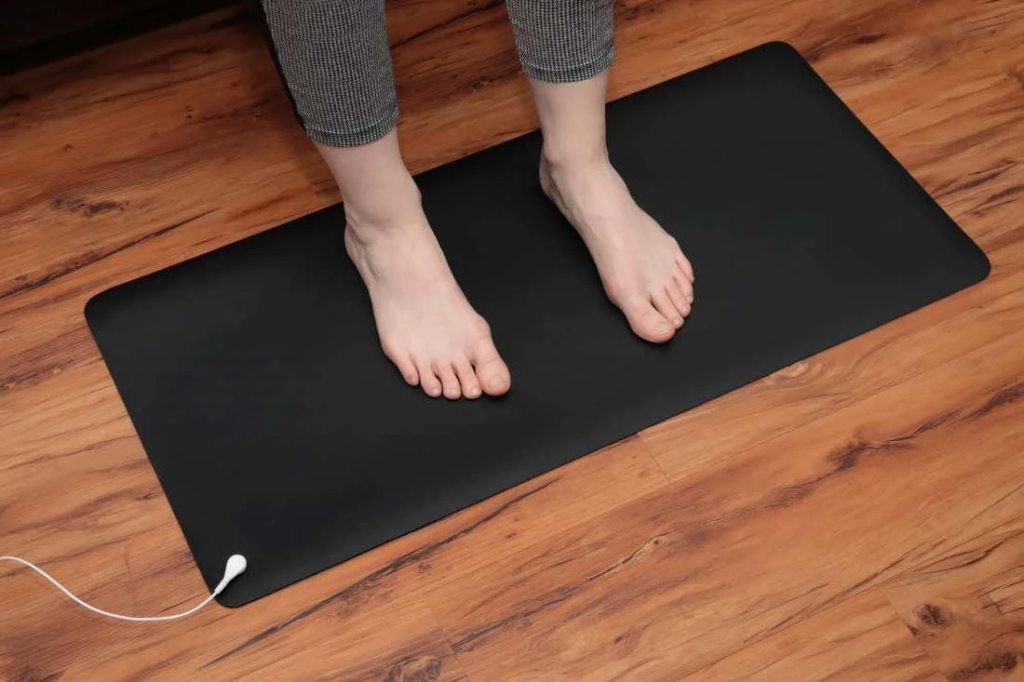Modern wellness trends have introduced us to various tools and techniques promising improved health and well-being. One such popular innovation is the grounding mat. But what exactly is a grounding mat, and does it live up to its claims? Let’s dig into the science, explore the benefits, and see whether grounding mats truly work or are just another
wellness fad.
Introduction to Grounding Mats
A grounding mat, sometimes referred to as an earthing mat, is designed to simulate the natural connection between the human body and the earth. Proponents of this product claim it can help combat stress, reduce inflammation, and even improve sleep. The concept is grounded (pun intended) in the idea that connecting with the earth’s surface can rebalance your body’s natural electrical energy.
These mats are typically made with conductive materials that allow electrons from the ground to flow into the body when used. They are connected to an electrical outlet or an outdoor grounding stake to mimic the effects of direct contact with the earth’s surface.
The Science of Grounding
Grounding, or earthing, is based on the principle that the earth’s surface carries an ample supply of negatively charged electrons. These electrons are said to neutralize the positive charge of free radicals in the body, which are thought to contribute to inflammation and other health issues.
The human body generates and absorbs electrical charges throughout the day. Activities like walking on synthetic surfaces, using electronic devices, and wearing rubber-soled shoes may disrupt our natural grounding. Advocates of grounding suggest that reconnecting with the earth can restore balance, promoting better physiological function and overall well-being.
Examining the Research
While grounding mats have gained significant popularity, scientific research is still in its early stages. A handful of small studies have explored the potential benefits of grounding, offering preliminary insights:
- Reduced inflammation: A 2015 study published in the Journal of Environmental and Public Health found that grounding may reduce inflammation by neutralizing the body’s inflammatory response. Participants reported less pain and swelling after grounding therapy.
- Better sleep quality: Another study suggested that grounding could help regulate cortisol levels, the body’s primary stress hormone, leading to improved sleep patterns.
- Faster recovery: Athletes who used grounding techniques post-exercise noted reduced muscle soreness and faster recovery times in experimental settings.
However, these studies often involve small sample sizes and limited clinical trials, making it hard to draw definitive conclusions. More extensive and peer-reviewed research is required to validate these claims.
How to Use Grounding Mats
If you’re curious about trying a grounding mat, the good news is that it’s simple to use, even for beginners. Here’s how to get started:
- Place the mat on a surface where you’ll spend a lot of time, such as your bed, couch, or workspace.
- Connect the mat to its grounding cord and plug it into a grounded electrical outlet or a grounding stake outside your home.
- Remove insulating materials, such as shoes or thick socks, before using the mat. Bare skin contact ensures proper conductivity.
- Spend time on the mat daily. Many users recommend starting with 20-30 minutes per day and gradually increasing usage over time.
By incorporating a grounding mat into your routine, you can simulate the experience of walking barefoot on the earth’s surface, even from the comfort of your home.
Potential Benefits
Those who swear by grounding mats report a variety of benefits that align with general grounding practices. Here’s what proponents say you might expect:
- Reduced stress levels: Grounding may promote calmness and relaxation due to its impact on the nervous system.
- Improved sleep: Many users claim they fall asleep faster and enjoy deeper, more restful sleep after consistent use.
- Decreased inflammation: The anti-inflammatory effects have been highlighted by early research and anecdotal feedback from users.
- Enhanced energy levels: By rebalancing the body’s electrical charge, grounding is said to boost overall vitality and well-being.
It’s important to note that these benefits are largely anecdotal and may vary from person to person.
Addressing Skepticism
Despite its advocates, grounding remains a contested topic in the health and wellness community. Critics argue that there is insufficient scientific evidence to support many of the claims about grounding mats. Others believe that any perceived benefits may simply be the result of a placebo effect, where positive outcomes arise from the expectation that the product will work.
Here’s the reality: grounding mats are unlikely to be a magical cure-all. However, for many users, the subjective benefits of feeling calmer, sleeping better, or experiencing less stress might still make them worthwhile.
A Balanced Perspective
Grounding mats have carved out a unique niche in the wellness world, offering a simple way to explore the potential benefits of earthing from home. While the science is still emerging, users have reported a range of positive effects, from reduced stress to improved sleep.
If you’re curious, trying a grounding mat might be a low-risk addition to your wellness routine. Just remember to keep expectations balanced. Use this as a complement to other healthy habits, not as a replacement for medical advice or treatment.
Whether it’s science or simply the power of taking time to relax, grounding mats may just offer the reset some of us are looking for.

